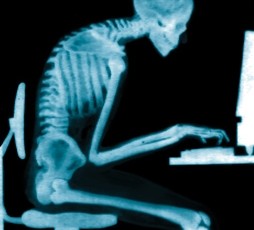Each week, it seems, we run into themes when it comes to client complaints. Last week’s ailment of the week turned out to be Trigger Finger, a painful condition that can limit your ability to function and that western medicine seems to have very little information about how to treat.
In fact, prior to the 90’s, Trigger Finger seemed to only affect a small number of people. Mostly the elderly, those with Osteoarthritis and/or those that had experienced some form trauma or excess strain to their finger(s).
In recent years though, the number of people with the disorder has increased while the average age of those affected has gone down. It’s now being recognized as a repetitive strain injury or cumulative trauma disorder — these account for nearly two-thirds of all work-related illnesses.
Trigger Finger Symptoms
Believed to be caused by overuse or cumulative strain, Trigger Finger‘s symptoms range from a painless occasional popping or jerking of the finger(s), to severe dysfunction, often accompanied by pain and a continuous locking of the finger(s).
This is often the result of overused flexor muscles/tendons and the subsequent adhesion or fibrotic nodule that forms on the tendon. When left untreated, these adhesions can become larger, impeding the joints’ movement.
Relief for Trigger Finger
The best course of action for Trigger Finger is stretching and strengthening exercises and massage to help loosen adhesions and scar tissue build-up. Breaking down the adhesion on the affected tendon, can reduce its size so that it will again slide through the pulley system of the finger joint normally — no longer “catching” or “locking.” In addition, by building strength in your opposing finger extensor tendons you can create muscle balancing to help prevent future issues with Trigger Finger. This creates equality of tendon length and strength on both sides of the finger joint.
Other treatments for Trigger Finger include finger splints, injections and in the most severe cases, surgery. To help prevent the need for surgery, start by properly stretching and strengthening your hand and fingers each day, especially if you work in a field where repetitive strain is prevalent. Here are a few exercises to get you started:
Remember, if you have the beginnings of Trigger Finger, don’t show off your popping finger, it only serves to further irritate the tendon, making it worse. Trigger Finger is sometimes confused with Dupuytren’s Contracture which we will discuss in our next post.
If you’re experiencing symptoms of Trigger Finger, let us know during your next appointment and we can show you some more safe and effective exercises as well as work on the underlying adhesions to help free you of the pain and frustration of Trigger Finger.




